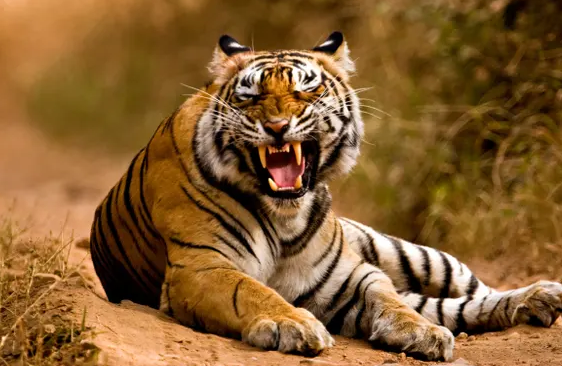Prime minister says increase after conservation efforts is ‘historic achievement’
India’s wild tiger population has increased by more than 30% in four years, raising hopes for the survival of the endangered species.
A census found there were 2,967 tigers, up from 2,226 four years ago. The prime minister, Narendra Modi, called the figures a “historic achievement” and said India was one of the biggest and safest habitats for tigers around the world.
The comprehensive survey is conducted every four years and is based on information collected by wildlife officials across 146,000 sq miles (380,000 sq km) of land. It also draws on data collected from almost 350,000 images taken by 26,000 camera traps in known tiger habitats.
Conservation experts said the rise in the tiger population was promising but the figures should be treated with some caution. The rise may indicate better counting.
Neha Sinha, a wildlife conservationist, said the census may suggest more tigers are breeding in protected areas but there were worrying signs tigers are not able to safely disperse and find their own territory.
“Every adult tiger needs to create his or her own territory, and this territory is sometimes almost 200 sq km, so they need quite a bit of space,” she said. “If you want our numbers to be stable then tigers need to disperse.”
Habitats are increasingly being encroached upon by development projects such as roads, canals and railways. Conflict between humans and tigers is also a continued threat, conservationists say. Animosity towards tigers, provoked by attacks on humans or the killing of cattle, has led some communities to leave poison or to attack the animals.
Last week Indian police arrested four people in Uttar Pradesh after a group of villagers beat a tiger to death. The tiger had attacked people after straying out of the Pilibhit tiger reserve.
According to government data, on average tigers or elephants kill one person a day.
Sinha said the concerns of communities should be listened to and compensation should always be provided where tigers kill livestock. “The burden of tiger conservation should not lie on the poorest,” she said.
Modi said the number of protected areas in the country rose to 860 last year, from 692 in 2014. The number of community reserves has more than doubled, to 100.
In 1900 more than 100,000 tigers roamed the planet, but by 2010 the figure had fallen to a record low of 3,200. The decline prompted India and 12 other countries with tiger populations to sign an agreement to double their numbers by 2022 . Modi said India had achieved this goal four years ahead of schedule.

